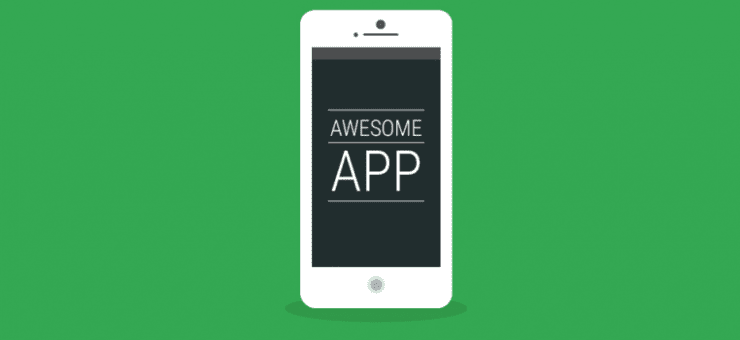Have you come across an educational website that really impressed you?
Chances are, you haven’t.
Website design is a constantly developing field, but many educational websites seem to fail to keep with its trends. As a result, their users often report experiencing issues like confusing navigation, lots of 404 pages due to improper maintenance, and outdated design.
However, the situation has been changing in recent years. With online education developing at the speed of light, the number of online courses as well as universities and community colleges providing them exploded, facilitating the need for quality web presence.
As the competition becomes much fiercer, the attractiveness of the websites representing educational institutions is quickly becoming one of the factors that students take into account when selecting their path.
Yes, some people still seem to judge a book by its cover, but when you think about it, a website that follows the latest trends in educational web design is a strong indicator of the skillful use of technology by the institution.
Plus, with the costs of recruiting students being around $2,357 and $536 for private and public educational institutions respectively (data from 2018 Cost of Recruiting an Undergraduate Student Report), it makes a perfect sense to try to minimize them by putting a great web design to work.

Credit: Cost of Recruiting an Undergraduate Student Report
And having a progressive educational website really does affect the way visitors think about the institution, too.
Don’t believe following web design trends is critical for educational websites? Then you should definitely check out the rest of the article. There, I’m going to list the latest web design trends that you need to follow to make it as attractive to potential students as possible. But first, here’s something convincing for you.
The Role of Web Design on Students’ Decisions to Attend a University
While researching the materials for this article, I found that educational institutions have started to explore the importance of websites as well as web design not so long ago. However, the results were pretty amazing.
Let me summarize the most relevant findings from the recent surveys.
Robert Morris University Study Result: Design is Important for Attracting Attention of Potential Students
A group of researchers collected information using an online tool to define “the role of the internet and University webpages play in student decisions to consider and attend any specific university.”
According to the results published in Research in Higher Education Journal, all of the respondents indicated that a university’s website “was important” in their selection process. Also, the researchers emphasized that the website should be “attractive and clearly understood,” which once again supports the idea that the quality of web presence plays an important role in attracting students.
On top of that, many of the surveyed also said that the website was a strong precursor to a decision to visit the campus (read below to see how universities use video to encourage that decision).
Southern Utah University Research Result: Design Helps to Recruit More Students
This one is interesting because it approached the topic from a unique angle: the impact of web design on student recruitment. According to the published results, professional and creative web design of educational websites was engaging and built “a powerful emotional connection” with their visitors.
Here are some more takeaways:
- Attractive and interesting visuals engaged visitors and were effective at creating an emotional connection with an institution
- Students trusted professionally-made websites more because they found them more credible and sparked interest in content, leading to longer browsing sessions
- Many students judged the credibility of the website based on its typography, color scheme, layout, font size, and overall design
- Web design played an important role in increasing recruitment numbers.
Evidently, being progressive when it comes to web design is something that can support your educational website and contribute to larger goals. With that in mind, let’s quickly review the most important web design trends to inform your next major website redesign.
Web Design Strategies for Progressive Educational Websites
1. Bold, Engaging Visuals (Especially on the Home Page)
As the abovementioned research suggested, the quality of visuals played a critical role in attracting attention to educational websites. This is exactly the strategy followed by the University of Montana’s website. The home page features a number of quality visuals. First, the viewer is greeted by stunning nature image. Never thought that Montana was that beautiful.

Next, as the visitor scrolls down, they discover more specific visuals showing different scenes from the university’s life (as we already know, this is a technique that seeks to encourage visitors to connect with the institution on an emotional level).
Like this one, promoting university groups.

And this one, encouraging the visitors to apply to “take advantage of the experimental-learning” opportunities and showing one in progress.

2. Not Too Much Text
Yes, this is that simple: let students worry about lectures later. Use only the most relevant copy to represent the most important information they need to know about your university and the services that it provides.
This is clearly evident in The Savannah College of Art and Design’s (SCAD) website.

The design is super clean and makes a clear statement that SCAD is all about creativity and uniqueness (just look at the fancy font and colors).
In terms of text, the information is nicely divided into easy-to-consume sections; subheadings also help with understanding.

Clearly, selecting the most relevant information to be represented on a website requires some expertise, so the use of online writing and editing tools such as WowGrade.net is often a decision that institutions make to deliver excellent UX writing.
3. Bold Fonts
Education is not known for experimenting with fonts (Times New Roman and Arial are clear winners there), but the websites of universities and colleges that use bold and more interesting fonts entice more visitors to browse more.
I’ll use the example of SCAD more time because, well, they are a creative institution. Just look at their brilliant use of different fonts (don’t forget that the above image of their home page also has some great fonts). Amazing!

As you can see, in addition to really creative fonts, they also experiment with colors.

Any person looking to start a creative career would be happy to see this and get to know more about the institution.
4. Fast Speed
Bold fonts and impressive images are great, but their effectiveness at attracting new recruits could be reduced by a slow-loading website. Fast speed of loading is one of Google’s main requirements for better user experience, so having a website that loads for more than 10 seconds could prove to be disastrous for achieving your enrollment goals.
While there are no stats on how much time potential students are willing to wait for a website to load, there’s evidence from Google that 53 percent of visitors leave a mobile website if the loading time is longer than 3 seconds. What can we do, we live in an impatient world.

Credit: Think With Google
With a lot of students their mobile devices to access websites and site speed being one of the ranking factors, it’s simply unacceptable to have your institution represented by a slow-loading website. Start optimizing it by using Google’s own free speed test.
5. Color-Powered, Clear Navigation
Carnegie Dartlet cited a study done by Nielsen Norman Group that found that 48 percent of users of educational websites didn’t realize that the university offered a program they were looking for. Poor navigation is certainly one of the reasons for this.
To avoid losing potential students and providing them with all the information they need to know about your institution, your website needs to have clear navigation. A creative user of colors could be a great way to achieve that.
For example, take a look at the home page of the Rochester Institute of Technology.

The main menu of the website is easy to find and makes it easy for visitors to view the list of programs and majors. To make the site more user-friendly, the Institute also uses the white space beautifully as well as different colors for different menus and call-to-action buttons (like the “Learn More” on the below image that stands out thanks to its color).

6. Use of Quality Video
Since most people are visual learners, we typically respond to videos very well. That’s why video is the most engaging content type that produces a good return on investment, according to 78 percent of online marketers.
And this is a reason why including videos on educational websites in a creative way is a major web design trend. Not only does video increase engagement but also it serves as an awesome tool to achieve such goals as:
- Introduce the institution and staff
- Show student life
- Help visitors visualize their experience as students.
The website of the Rochester Institute of Technology is a great example of excellent use of video. First, the home page greets the visitor with a wide-screen video showcasing the campus, student projects, and other events from the life of students.

Scroll down a bit more and you’ll find the “Faces of RIT” section that contains 4 short videos introducing students and educators and their incredible projects. Each of the videos is really well-made and certainly does a great job at complementing other content on the website and sharing the information needed to get insights into the student life at RIT.

Thanks to the videos, the home page has become an excellent visit card that showcases what the organization has to offer.
Thoughtful Web Design Makes a Difference
Having conducted this research into the role of web design in attracting more attention to educational websites, I can confidently claim that more and more of them are starting to pay close attention to what’s trending in the design game. In other words, ignoring the points mentioned above as well as demonstrating a poor use of technology with a slow-loading, complex website is simply not an option for progressive educational institutions.
A well-designed website that follows the rules that we’ve just reviewed will certainly be more attractive to potential students by delivering the most relevant information in an easy-to-understand way. Hopefully, this article can help you with setting priorities for your website redesign and making it the tool that will attract more students and educators.
About the author: Adriana Veasey is a web design enthusiast and professional blogger who is currently working on the book on the role of UX writing for making better digital products. Adriana has contributed to numerous blogs on web development and design and currently provides writing and editing advice at EssaysDeluxe.
Title image from Abstract pack on Ouch, the library of free vector illustrations
Read how to integrate branding into user interface design, how to optimize your WordPress website and how to create catchy title images for your content




